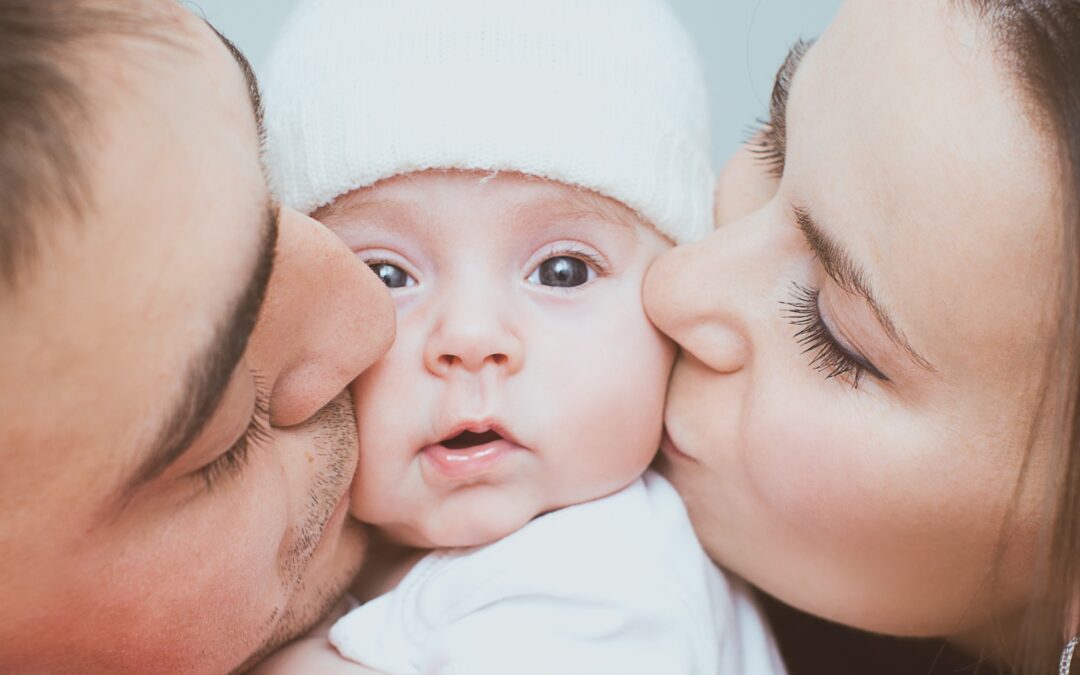Attachment Theory, developed by British psychologist and psychiatrist John Bowlby and American-Canadian psychologist Mary Ainsworth, revolutionised previous ideas about human development. Bowlby, through numerous observations, concluded that an infant’s tie to its mother, or lack thereof, was crucial for relationships (Bowlby, 1969/1982). Ainsworth introduced the concept of the mother-figure as a secure base from which the child could explore the world, as well as the importance of maternal skills in recognising signals sent by the child to meet its needs (Ainsworth et al., 1978). Both Bowlby and Ainsworth were influenced by Freud’s concept of the Oedipus Complex, although they diverged significantly from psychoanalytic theory in their emphasis on real-life experiences rather than fantasy (Bretherton, 1992).
The Formation of Attachment
In the first stage of child development, the most important task is the formation of attachment, which is a natural, long-term, emotional bond between the child and its main caregiver. During this period, the caregiver’s role is to skilfully recognise physical or mental states signalled by the infant through crying, hugging, agitation, or laughter (Bowlby, 1969/1982). When a baby is consistently settled, it gains the knowledge that it is important and in a friendly environment. This process of attunement and responsiveness has been shown to have significant implications for the child’s developing nervous system and stress response (Schore, 2001).
Bowlby (1951) concluded, “The infant and young child should experience a warm, intimate, and continuous relationship with his mother (or permanent mother substitute) in which both find satisfaction and enjoyment” (p. 13). This concept has been further supported by neurobiological research, which has shown that early attachment experiences shape the development of neural pathways involved in emotion regulation and social cognition (Schore, 2001; Siegel, 2012).
Stages of Attachment Development
Recent research has expanded our understanding of the stages of attachment development, providing more nuanced insights into the process:
**Early Months**
At 3-6 months old, the child will happily accept other people besides its mother. In this phase of initiating social interactions, the child becomes more active, and successful attempts to interact shape subsequent strategies for establishing relationships (Thompson, 2016). Studies have shown that infants as young as 3 months old can distinguish between their primary caregiver and strangers, showing preferential responses to their caregiver’s face and voice (Bushnell, 2001).
**Around 6 Months**
By this age, all soothing events and need satisfaction are associated with the mother-figure. The child recognises the caregiver’s role in regulating its emotional states and begins to see the caregiver as a secure base for exploring the world (Ainsworth et al., 1978). Research has demonstrated that infants at this age show clear attachment behaviours, such as proximity seeking and separation distress (Sroufe, 2005).
**Around 10 Months**
Social referencing occurs at about 10 months of age when a child seeks answers in the reactions of other people. Information from the caregiver will be crucial for the child’s understanding of events and future reactions (Campos & Stenberg, 1981). Recent studies have shown that this ability to use others’ emotional reactions as a guide for behaviour is a crucial developmental milestone, linked to later social competence and emotional understanding (Carver & Vaccaro, 2007).
Factors Influencing Secure Attachment
Factors leading to the formation of a secure attachment pattern include:
– Availability of the caregiver (physical and psychological presence)
– Caregiver sensitivity
– Proper interpretation of signals
– Adequate response to the child’s needs (De Wolff & van IJzendoorn, 1997)
Recent meta-analyses have confirmed these factors, while also highlighting the importance of parental mentalization – the caregiver’s ability to understand the child’s mental states – in fostering secure attachment (Zeegers et al., 2017).
Long-term Effects of Attachment
Bowlby (1973, 1980) concluded that the mother-child relationship experience would have a generalised impact on the perception of self and the world, thus affecting relationships with others. Children who reveal a secure relationship with their mother-figure in the earliest period of life are more likely to develop a high level of independence and autonomy later in life. Longitudinal studies have supported this view, showing that early attachment security predicts better social competence, emotional regulation, and mental health outcomes in adolescence and adulthood (Sroufe, 2005; Thompson, 2008).
Attachment Patterns
Ainsworth introduced four patterns of attachment:
1. Secure
2. Insecure-avoidant
3. Insecure-ambivalent
4. Insecure-disorganised (Main & Solomon, 1986)
Each pattern has consequences for the child’s continued functioning, including the ability to establish relationships, self-regulation of emotional states, and perception of the world and others. Recent research has expanded on these patterns, exploring their neurobiological correlates and long-term developmental implications (Cassidy & Shaver, 2016).
Attachment in Later Life
Throughout life, human beings form various relationships that can be related to attachment theory, including marriages, same-sex relationships, friendships, and even membership in peer groups. Attachment-like bonds can also exist between members of the military or between siblings in the absence of parents (Hazan & Shaver, 1987; Fraley & Shaver, 2000). Recent research has explored how adult attachment styles influence romantic relationships, workplace dynamics, and even responses to psychotherapy (Mikulincer & Shaver, 2016).
Impact on Brain Development
Research has shown that early experiences and adaptations shape future development through their influence on intermediary steps. The infant’s transactions with the early socio-emotional environment indelibly influence the evolution of brain structures responsible for socio-emotional functioning throughout life (Schore, 2001). Neuroimaging studies have provided evidence for the impact of early attachment experiences on brain structure and function, particularly in areas involved in emotion regulation and social cognition (Tottenham, 2014).
In conclusion, the environment provided by a child’s primary caregivers has a tremendous impact on all aspects of early development and later life. Correct childcare and a secure attachment lead to positive attitudes towards life, easier relationship formation, and overall well-being. This conclusion is supported by decades of research across multiple disciplines, including developmental psychology, neuroscience, and clinical studies (Thompson, 2016; Cassidy & Shaver, 2016).
References
Ainsworth, M. D. S., Blehar, M. C., Waters, E., & Wall, S. (1978). Patterns of attachment: A psychological study of the strange situation. Lawrence Erlbaum Associates.
Bowlby, J. (1969/1982). Attachment and loss: Vol. 1. Attachment. Basic Books.
Bowlby, J. (1973). Attachment and loss: Vol. 2. Separation: Anxiety and anger. Basic Books.
Bowlby, J. (1980). Attachment and loss: Vol. 3. Loss: Sadness and depression. Basic Books.
Bretherton, I. (1992). The origins of attachment theory: John Bowlby and Mary Ainsworth. Developmental Psychology, 28(5), 759-775.
Bushnell, I. W. R. (2001). Mother’s face recognition in newborn infants: Learning and memory. Infant and Child Development, 10(1-2), 67-74.
Campos, J. J., & Stenberg, C. (1981). Perception, appraisal, and emotion: The onset of social referencing. In M. E. Lamb & L. R. Sherrod (Eds.), Infant social cognition: Empirical and theoretical considerations (pp. 273-314). Lawrence Erlbaum Associates.
Carver, L. J., & Vaccaro, B. G. (2007). 12-month-old infants allocate increased neural resources to stimuli associated with negative adult emotion. Developmental Psychology, 43(1), 54-69.
Cassidy, J., & Shaver, P. R. (Eds.). (2016). Handbook of attachment: Theory, research, and clinical applications (3rd ed.). Guilford Press.
De Wolff, M. S., & van IJzendoorn, M. H. (1997). Sensitivity and attachment: A meta-analysis on parental antecedents of infant attachment. Child Development, 68(4), 571-591.
Fraley, R. C., & Shaver, P. R. (2000). Adult romantic attachment: Theoretical developments, emerging controversies, and unanswered questions. Review of General Psychology, 4(2), 132-154.
Hazan, C., & Shaver, P. (1987). Romantic love conceptualized as an attachment process. Journal of Personality and Social Psychology, 52(3), 511-524.
Main, M., & Solomon, J. (1986). Discovery of an insecure-disorganized/disoriented attachment pattern. In T. B. Brazelton & M. W. Yogman (Eds.), Affective development in infancy (pp. 95-124). Ablex Publishing.
Mikulincer, M., & Shaver, P. R. (2016). Attachment in adulthood: Structure, dynamics, and change (2nd ed.). Guilford Press.
Schore, A. N. (2001). Effects of a secure attachment relationship on right brain development, affect regulation, and infant mental health. Infant Mental Health Journal, 22(1-2), 7-66.
Siegel, D. J. (2012). The developing mind: How relationships and the brain interact to shape who we are (2nd ed.). Guilford Press.
Sroufe, L. A. (2005). Attachment and development: A prospective, longitudinal study from birth to adulthood. Attachment & Human Development, 7(4), 349-367.
Thompson, R. A. (2008). Early attachment and later development: Familiar questions, new answers. In J. Cassidy & P. R. Shaver (Eds.), Handbook of attachment: Theory, research, and clinical applications (2nd ed., pp. 348-365). Guilford Press.
Thompson, R. A. (2016). Early attachment and later development: Reframing the questions. In J. Cassidy & P. R. Shaver (Eds.), Handbook of attachment: Theory, research, and clinical applications (3rd ed., pp. 330-348). Guilford Press.
Tottenham, N. (2014). The importance of early experiences for neuro-affective development. Current Topics in Behavioral Neurosciences, 16, 109-129.
Zeegers, M. A. J., Colonnesi, C., Stams, G. J. J. M., & Meins, E. (2017). Mind matters: A meta-analysis on parental mentalization and sensitivity as predictors of infant-parent attachment. Psychological Bulletin, 143(12), 1245-1272.
Citations:
[1] https://ppl-ai-file-upload.s3.amazonaws.com/web/direct-files/13024694/9d9892c1-9d2b-4f04-8570-4f5fa30cff93/attachment.docx

I am an experimental psychologist and cognitive neuroscientist, working as a PhD researcher in the Centre for Cognition, Computation and Modelling at Birkbeck, University of London. My work investigates the architecture of working memory, how our highest cognitive functions develop and change across the lifespan, and the design of interventions to support cognitive health, particularly in ageing.
My professional foundation in psychology and cognitive neuroscience is built upon over fifteen years of continuous, hands-on research and applied practice. This extensive trajectory is formally validated by a portfolio of over 245 accredited Continuing Professional Development and Continuing Medical Education certificates, reflecting a sustained and profound dedication to expertise.
My work is defined by established, evidence-based concentrations in complex, high-impact areas:
-
Clinical & Neurocognitive Health: My advanced expertise encompasses the neuroscience and clinical management of degenerative diseases such as Alzheimer's, Parkinson's, and Multiple Sclerosis, alongside neurodevelopmental conditions including ADHD and Autism. I also maintain a command of trauma-informed care, epilepsy, sleep disorders, schizophrenia, and substance use disorders.
-
Women's Mental Health & Lifespan Care: A core area of my practice focuses on women's mental health, with in-depth knowledge of disorders where biological and psychological health intersect. This includes specialised proficiency in perinatal and postpartum mental health, perimenopausal and menopausal mood disorders, the psychological impact of polycystic ovary syndrome (PCOS) and endometriosis, and the mental health dimensions of breast cancer and cardiovascular disease.
-
Intervention, Innovation & Cognitive Healthspan: My concentration is in designing both cognitive rehabilitation strategies and evidence-based programmes for healthy cognitive ageing. This involves the applied use and governance of AI in healthcare, machine learning for health equity, gamification in treatment, and deploying integrated telehealth platforms to support cognitive vitality across the lifespan.
-
Inclusive Practice & Scientific Leadership: My work is grounded in expert knowledge of mental health leadership, team-based care models, and the psychology of influence. It is further informed by advanced, practical training in diversity, equity, and inclusion—with a particular focus on LGBTQ+ health, mitigating unconscious bias, and providing culturally integrated care—all governed by a rigorous framework of research ethics and science communication.
Outside of academic research, I design and build proprietary digital tools for cognitive intervention. This work is the foundation of NeuxScience, a Software-as-a-Service (SaaS) platform that I architected and developed. The system leverages my own machine learning models and data science pipelines to deliver personalised, adaptive cognitive training by integrating my research on higher order cognitive functions directly into the platform's core logic.
I am committed to making the science of the mind clear and useful. Through my writing, I aim to educate, share evidence, and show how research in cognition and brain health can be applied in everyday, meaningful ways.
In my life beyond work, I am a mother and wife, managing a very full home with three boys, four dogs, and five cats.



